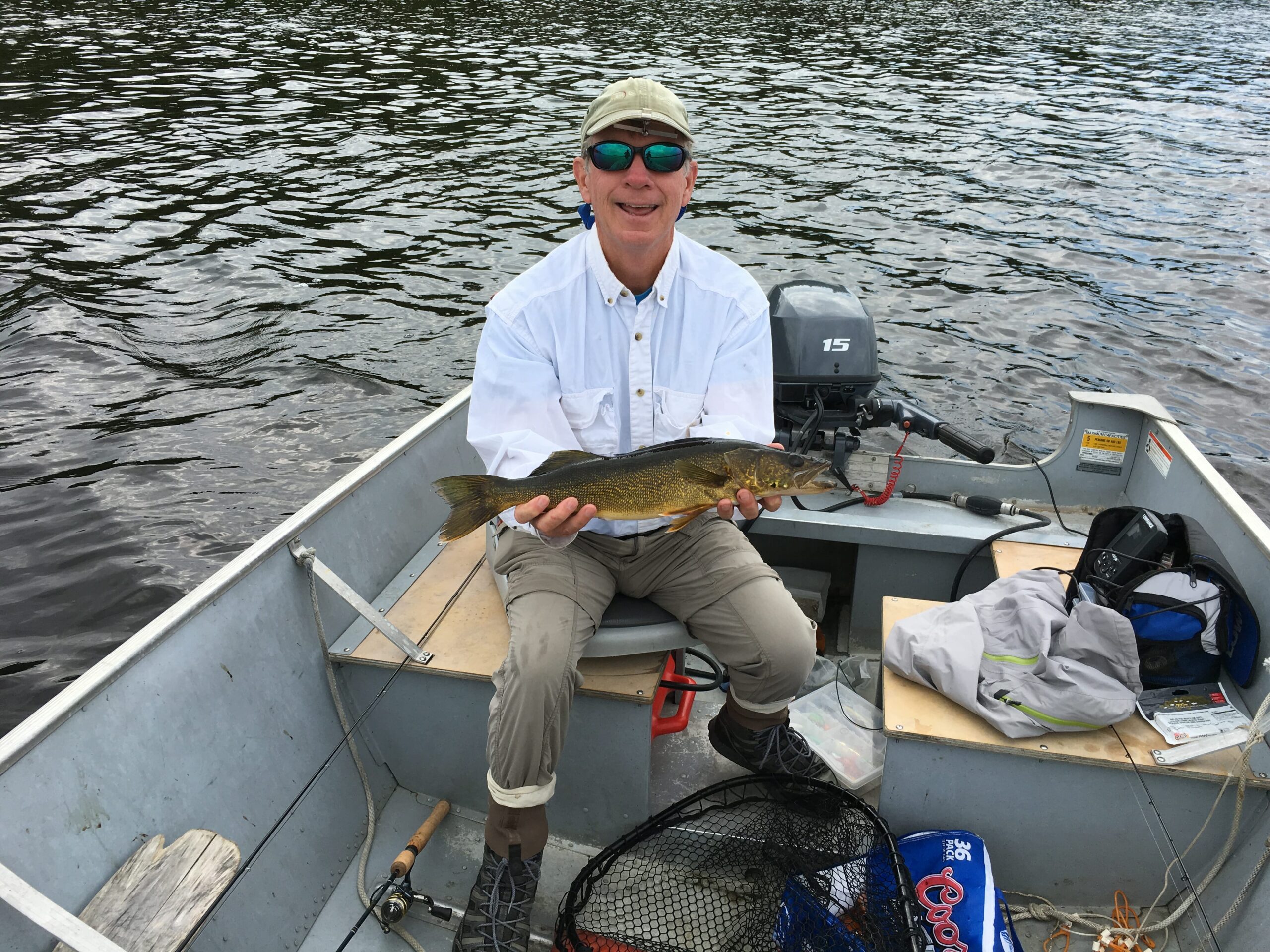By Chris Wood
“I was the first person Charles Gauvin hired at Trout Unlimited when he became CEO in 1992. He wanted to hire Steve Moyer, but Steve and Michelle just had their first child, and Steve thought the organization’s finances were too unstable. At the time Trout Unlimited had a budget of $2 million with an annual deficit of $750,000 per year.”
Joe McGurrin, who just retired from TU after 25 years, talked as we cast flies and twister-tails to pike and walleye at a lake in the Ontario wilderness.
“There was so much potential, but a lot of headaches, too. The 100 person board wanted to run the organization. The magazine was awesome, but bleeding cash. Right before I arrived, the board passed a resolution in support of clear-cutting on our national forests. TU’s position drew serious negative attention from the outdoor press. Charles said to me, ‘I want you to write a policy statement on national forests. We can’t have people talking about TU supporting clear-cutting!’
The board voted to reverse course on its support for clearcutting, and Joe’s federal land policy helped to set a strong path for TU’s public land work over the years. This was the first of many “saves” in Joe’s 25 year career at Trout Unlimited. Early in his career, Joe was instrumental in helping to protect Red Brook in Massachusetts, and its super-cool population of salters. Salters are a unique strain of brook trout that will at various times move from fresh water to salt water. Daniel Webster is purported to have once caught a 13 pound trout in New York. It was likely a salter. More recently, Joe helped to raise funds for the TU science team to conduct a rangewide assessment of salters. They found more than 400 streams that could harbor salters. TU volunteers have since confirmed that salters persist in well more than half of them.
Joe is among Trout Unlimited’s strongest advocates for native fish. He was an early voice calling for the establishment of “meta-populations” of rare trout such as Rio Grande cutthroat. Historically, fishery managers built barriers in headwater streams where Rio Grande persisted to keep invasive species of trout that could interbreed or outcompete with them, out.
Joe and other scientists helped explain that these fish need to move in response to flood, fires, and drought, and he led the drive to create meta-populations where Rio Grande cutts, and other imperiled fish can move through connected systems. Joe, and our also recently retired senior scientist, Jack Williams (who was supposed to join us in Canada, but had to cancel at the last minute), were early advocates for the protection of other southwestern native trout such as Gila and Apache trout.
One of Joe’s finest qualities is his patience and skill at navigating complicated state and federal bureaucracies and convincing even the most cynical federal employees to support restoration through his combination of optimism and passion for native fish. Best of all was his patience. MaryAnn King, who worked with Joe closely in California recalls, “it wasn’t just the nuts and bolts of grant management that Joe imparted; it was some Joe wisdom – what language was going to be a red flag for OMB, what funders were expecting, how to use the system… At no point did he ever express frustration or an ounce of superiority or suggest that this was an extra burden; He just taught, and I was grateful for the mentorship.”
His connections to the Bureau of Land Management, NOAA Fisheries, the Fish and Wildlife Service, and the Forest Service have resulted in the protection and restoration of hundreds of miles of streams.
Fishing with him for walleye in Canada reminded me about his well-earned reputation as among the “fishiest” of the TU staff, more comfortable on the Chesapeake Bay than a trout stream, and with a spinning rod than a fly rod. “Let’s hit the slot at about 10 feet. The fish seem to be suspended a few feet off the bottom.” Then, “there he is,” and another walleye found the net.
Throughout his career, Joe has always been generous in terms of taking the children of present and former TU staff, such as Connor Curley and Hawken Zink fishing or crabbing. Let’s hope that his influence rubs off on them, and the next generation of conservation anglers. There are many good reasons why TU has grown from a financially troubled $4 million outfit in 1991 to an active, effective $50 million group in 2018, but Joe McGurrin’s spirited leadership on our behalf surely is one of them. Thank you, Joe, for the many good things you have done for TU, and here’s wishing you many more awesome fishing trips where you can delight us all with your unmatched passion and good cheer.
Chris Wood is the president and CEO of Trout Unlmiited. He lives in Washington, D.C., and works from TU’s Arlington, Va., headquarters.



